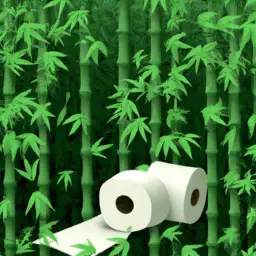I’ve discovered a game-changer for the environment: biodegradable toilet tissue. Say goodbye to traditional toilet paper and hello to a greener alternative.
In this article, I’ll explore the benefits of bamboo toilet paper and how it helps reduce deforestation.
Let’s dive into the science behind this eco-friendly option and learn how you can make the switch for a more sustainable lifestyle.
It’s time to embrace the future of toilet paper!
The Environmental Impact of Traditional Toilet Paper

The environmental impact of traditional toilet paper is significant and should be taken into consideration when making eco-friendly choices. When it comes to environmental sustainability, it’s crucial to understand the implications of our everyday actions, including the products we use.
Traditional toilet paper is made from virgin wood pulp, which leads to high resource consumption and deforestation. The production process involves cutting down trees, which not only disrupts ecosystems but also reduces the planet’s capacity to absorb carbon dioxide.
Furthermore, the manufacturing of traditional toilet paper requires a significant amount of water and energy. From the pulping process to the bleaching and packaging stages, each step contributes to resource depletion and pollution. The chemicals used in bleaching can also have adverse effects on aquatic life when they enter waterways.
Fortunately, there are eco-friendly alternatives to traditional toilet paper that minimize the negative environmental impact. Recycled toilet paper, for example, is made from post-consumer waste paper, reducing the need for virgin materials and saving trees. Additionally, some brands offer bamboo toilet paper, which is a more sustainable option as bamboo is a fast-growing and renewable resource.
Why Biodegradable Toilet Tissue Is the Better Choice
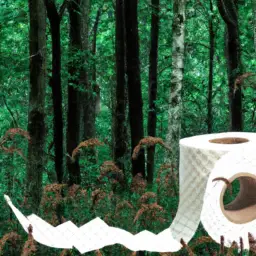
Using biodegradable toilet tissue is a better choice for me because it is environmentally-friendly and helps reduce waste. When it comes to sustainability, biodegradable toilet tissue offers several benefits. Firstly, it is made from renewable resources such as bamboo or recycled paper, which reduces the demand for virgin materials. Secondly, it breaks down easily in water and decomposes quickly, minimizing the amount of waste sent to landfills. Lastly, the production of biodegradable toilet tissue requires less energy and water compared to traditional toilet paper.
To further illustrate the benefits of biodegradable toilet tissue, let’s take a look at the following table:
| Benefits of Biodegradable Toilet Tissue |
|---|
| 1. Environmentally-friendly |
| 2. Reduces waste |
| 3. Made from renewable resources |
| 4. Breaks down easily in water |
| 5. Requires less energy and water |
As you can see, using biodegradable toilet tissue has numerous advantages. Not only does it help protect the environment, but it also contributes to the reduction of waste. By choosing biodegradable toilet tissue, we can make a positive impact on the planet and promote a more sustainable future.
The Benefits of Bamboo Toilet Paper for Green Living
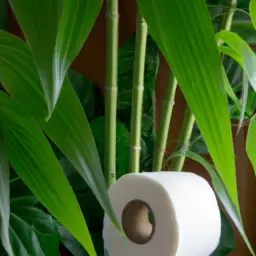
Personally, I frequently choose bamboo toilet paper for green living because of its numerous benefits. One of the major benefits of bamboo toilet paper is its sustainability. Bamboo is a fast-growing plant that can be harvested within three to five years, making it a highly renewable resource. In contrast, traditional toilet paper is made from trees, which take decades to grow and regenerate. By opting for bamboo toilet paper, we can help reduce deforestation and preserve our forests.
Another benefit of bamboo toilet paper is its biodegradability. Traditional toilet paper often contains chemicals and additives that can harm the environment when it breaks down. Bamboo toilet paper, on the other hand, is made from natural fibers and is free from harmful chemicals. When disposed of, it can decompose quickly and return to the earth without causing any harm to the environment.
Furthermore, bamboo toilet paper is soft and gentle on the skin. It provides a luxurious and comfortable experience, without compromising on its eco-friendliness. The softness of bamboo toilet paper is achieved without the use of harsh chemicals, which can be irritating to sensitive skin.
How Bamboo Toilet Paper Helps Reduce Deforestation
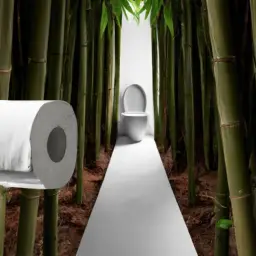
One of the ways bamboo toilet paper helps reduce deforestation is by growing significantly faster than trees, with some species reaching maturity in just three to five years. This makes bamboo a highly sustainable resource for paper production. Unlike traditional toilet paper that is made from trees, bamboo toilet paper offers an eco-friendly alternative that helps in the reduction of deforestation.
Bamboo is a grass that grows rapidly and can be harvested without killing the plant. This means that it can be continuously harvested without the need for replanting, making it a sustainable choice for toilet paper production. In contrast, trees used for traditional toilet paper take much longer to grow and require replanting, contributing to the deforestation problem.
To illustrate the difference between bamboo and trees in terms of growth rate, sustainability, and deforestation reduction, let’s take a look at the following table:
| Bamboo Toilet Paper | Traditional Toilet Paper | |
|---|---|---|
| Growth Rate | Rapid growth, reaching maturity in 3-5 years | Slow growth, taking several decades to mature |
| Sustainability | Continuously harvested without killing the plant | Requires replanting after cutting down |
| Deforestation Reduction | Helps reduce deforestation by using a highly sustainable resource | Contributes to deforestation due to slow growth and replanting requirements |
As you can see, bamboo toilet paper offers a sustainable solution to the problem of deforestation. By choosing this eco-friendly alternative, we can make a positive impact on the environment while still enjoying the comfort and convenience of toilet paper.
The Science Behind Biodegradable Toilet Tissue

As a consumer, I’m fascinated by the science behind the development of biodegradable toilet tissue. One of the key aspects of this science is the use of recycled materials in the manufacturing process. By using recycled paper, manufacturers are able to reduce the demand for virgin wood pulp, which is typically used in traditional toilet paper production. This not only helps to conserve forests and reduce deforestation, but it also reduces the energy and water consumption associated with the production of virgin pulp.
The process of manufacturing biodegradable toilet tissue involves several steps. First, the recycled paper is collected and sorted to remove any contaminants. It’s then cleaned and processed to create a pulp, which is mixed with water to form a slurry. This slurry is then spread onto a mesh screen, where water is drained off and the remaining fibers are pressed and dried. Finally, the dried paper is rolled into large rolls and cut into individual sheets.
The use of recycled materials and the manufacturing process of biodegradable toilet tissue contribute to its eco-friendly nature. By choosing this alternative, consumers can help reduce deforestation and promote a more sustainable future.
Making the Switch: Transitioning to Eco-Friendly Toilet Paper
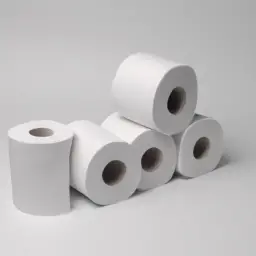
To successfully make the switch to eco-friendly toilet paper, I must prioritize sustainability and consciously choose products that align with my values. Switching to eco-friendly toilet paper may come with its challenges, but the benefits to the environment make it worth the effort. One of the main challenges is finding sustainable options that are both effective and affordable. Fortunately, there are several brands that offer eco-friendly toilet paper made from recycled materials or bamboo, which are more sustainable alternatives to traditional toilet paper.
To help you make an informed decision, here is a table comparing three popular eco-friendly toilet paper brands:
| Brand | Material | Packaging | Price |
|---|---|---|---|
| Brand A | Recycled paper | Plastic-free | $$ |
| Brand B | Bamboo | Compostable | $$$ |
| Brand C | Tree-free | Recyclable | $$ |
Conclusion
In conclusion, making the switch to eco-friendly toilet paper, such as biodegradable bamboo tissue, is a simple yet impactful step towards reducing our environmental footprint.
Traditional toilet paper has a significant negative impact on deforestation and contributes to waste accumulation.
By opting for sustainable alternatives, we can promote a greener lifestyle and contribute to the preservation of our planet for future generations.
Let’s say goodbye to traditional toilet paper and embrace the eco-friendly alternative.

